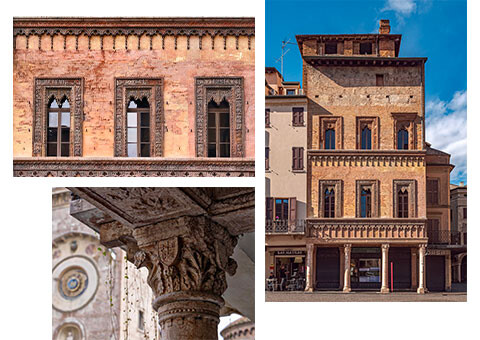Scaravelli:Residenza is housed in a historic residence dating back to the end of the seventeenth century. Its rooms overlook Piazza delle Erbe, one of the most evocative views of the city of Mantua. The architectural structure is typical of the "Mantuan house" with the commercial activities on the street level and the stairs leading to the merchants' houses on the upper floors. It is divided into three wings: the first one, which is accessed from number 22 of the Portici Broletto, corresponds to the original nucleus of the Residence and was completely renovated in 2006. The most recently renovated part, equipped with a lift and divided into two wings, is accessed from street number 30: in addition to the rooms, it also offers guests the opportunity to stay in studio apartments with kitchens for longer stays or for maximum freedom. The conservative restructuring has kept the original structures as unaltered as possible: floors, stairs, ceilings and walls have been restored respecting their historicity without intervening with structural changes that compromise their historical and artistic value. Located in the heart of the historic center, the Residenza is located in the pedestrian area. This privileged position, in addition to offering a particularly suggestive view, allows guests to fully enjoy the tranquility of the small urban center of the city of Mantua and the pleasure of being able to walk to all the main tourist attractions and major points of interest. A true immersive experience to live the city as a "Mantuan" citizen.
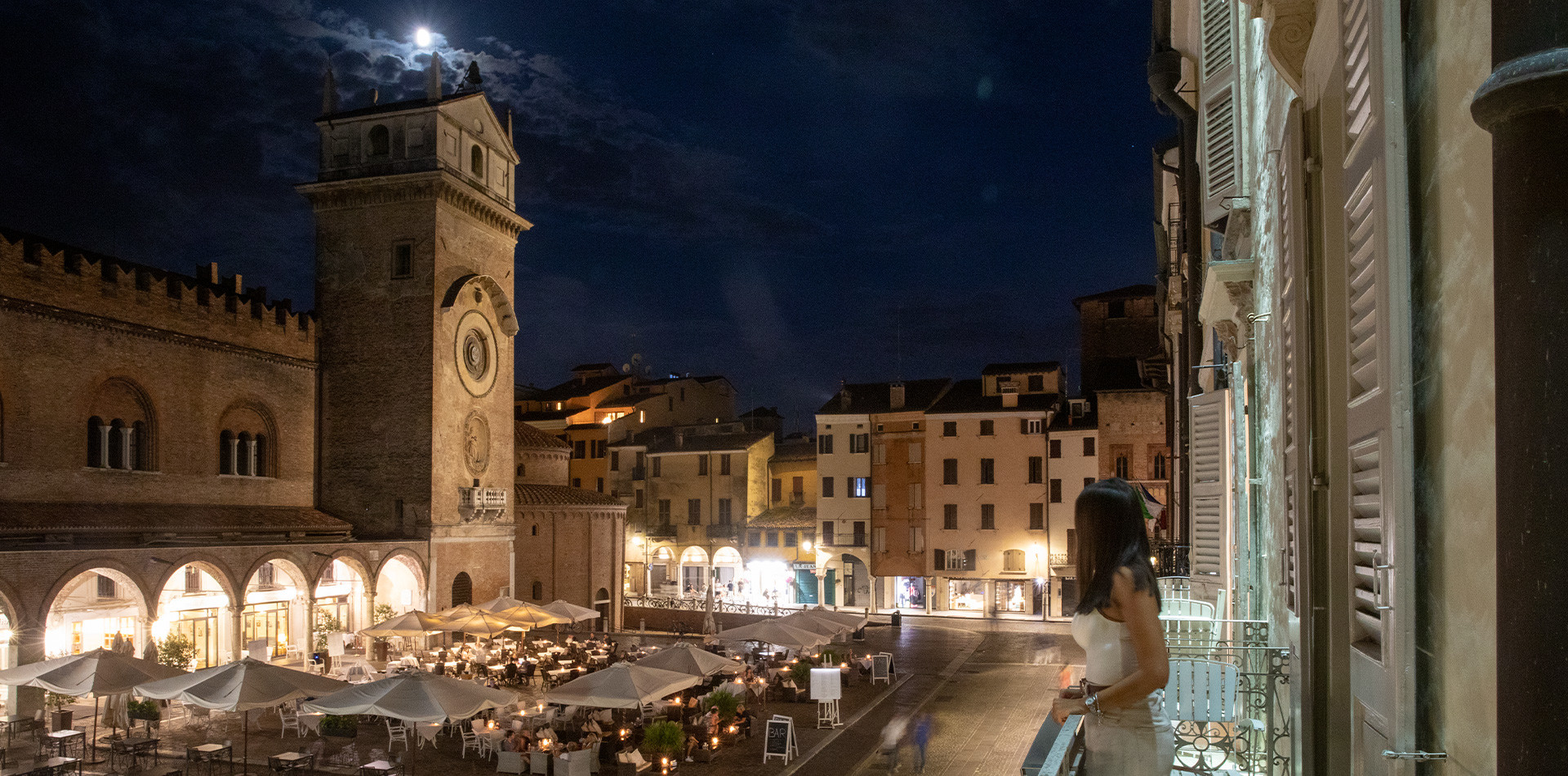
Residence
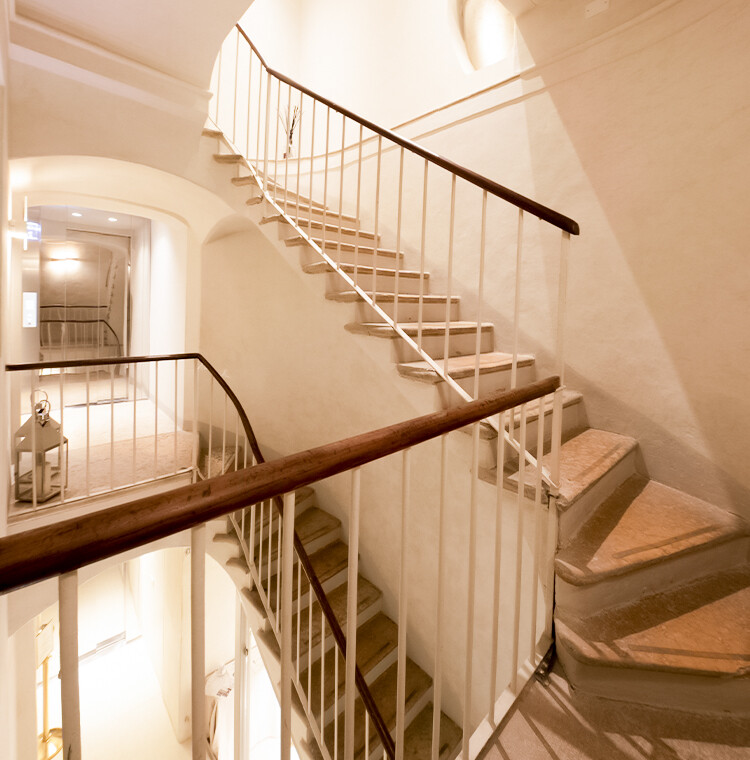
Piazza delle Erbe
Piazza delle Erbe (or simply Piazza Erbe) is one of the main squares in Mantua.
Born in the communal age as a forum for commercial activities, markets and artisan shops, it was subsequently divided in two by the Palazzo del Podestà and transformed into the administrative heart of the Municipality.
On the eastern side of the part destined to become Piazza delle Erbe, the Palazzo della Ragione was built, alongside the already existing Rotonda di San Lorenzo from the Romanesque period. Under the dominion first of the Bonacolsi and then of the Gonzagas, the administrative and political power center moved to the current Piazza Sordello and the medieval buildings of Piazza Erbe underwent, over the centuries, rearrangements and renovations. The sequence of houses that housed the city merchants was exquisitely embellished with late Gothic and Renaissance porticoes. To characterize the square as Renaissance was Luca Fancelli, the Florentine architect who intervened on the Palazzo del Podestà, rebuilt the arcades in front of the Palazzo della Ragione and designed the Clock Tower.
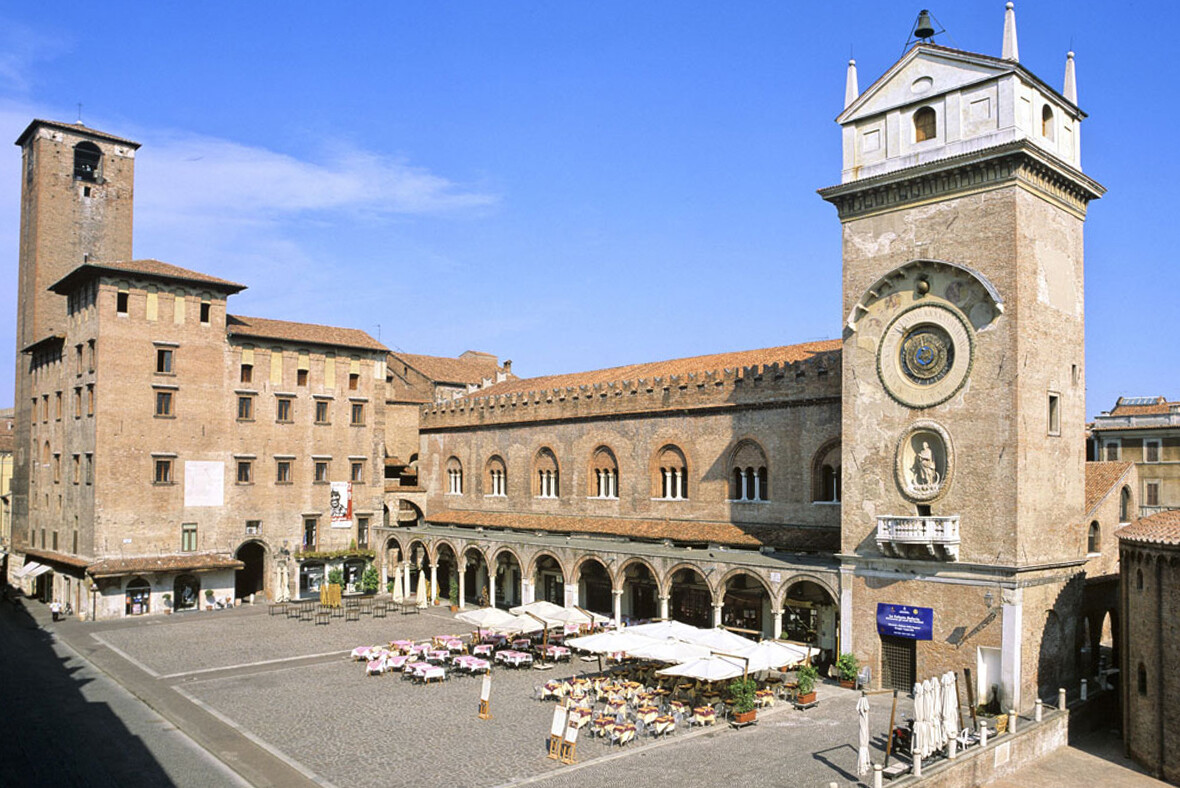
Palazzo della Ragione
The Palazzo della Ragione, located in Piazza delle Erbe, was built around 1250 on the ruins of a building next to the Rotonda di San Lorenzo that the Canossa family had used as a hospice for pilgrims visiting Mantua to the relics of the Precious Blood of Christ. It was later used as a town hall and then as a market.
During the Gonzaga lordship it was joined to the Palazzo del Podestà and used, in the fifteenth century, as a courthouse and notary archive. The external portico towards Piazza Erbe (which houses the tables of Scaravelli: Restaurant) and the Clock Tower are also from the same period.
Clock Tower
The Clock Tower is a Renaissance construction that rises between the Palazzo della Ragione and the Rotonda di San Lorenzo. The tower, with a square plan, was built between 1472 and 1473 by the Florentine architect Luca Fancelli. The door on the ground floor leads to the Palazzo della Ragione.
At the end of 1473 the astronomical clock was placed on the tower, the work of the Mantuan mathematician Bartolomeo Manfredi which indicated ordinary hours, astrologers and planets and which detected the path of the sun through the signs of the Zodiac and the phases of the moon. In the highest part of the tower there is a medium-sized bell that strikes the hours.
The Clock Tower now houses the Museum of Time, in which the ancient clock mechanisms are exhibited. From its top it is also possible to have an overview of Mantua and the lakes surrounding the city.
Rotonda di San Lorenzo
The Rotonda di San Lorenzo is a church built in the 11th century. According to tradition, it was built by the desire of Matilda di Canossa as an evocation of the Anastasis (Resurrection) of Jerusalem, the rotunda built around the Holy Sepulcher ideally connected to the relic of the Blood of Christ found centuries earlier in Mantua and now preserved in the nearby crypt of the basilica of Sant'Andrea. In fact, the structure suggests that the church was built by recovering or rebuilding an earlier Roman temple dating back to the 4th century. The church, a notable example of Romanesque art, is articulated on a central plan, completed by a semicircular apse and is characterized by an upper gallery which preserves fragments of frescoes from the 11th-12th centuries representing a rare example of Romanesque-Lombard painting by clear Byzantine school.
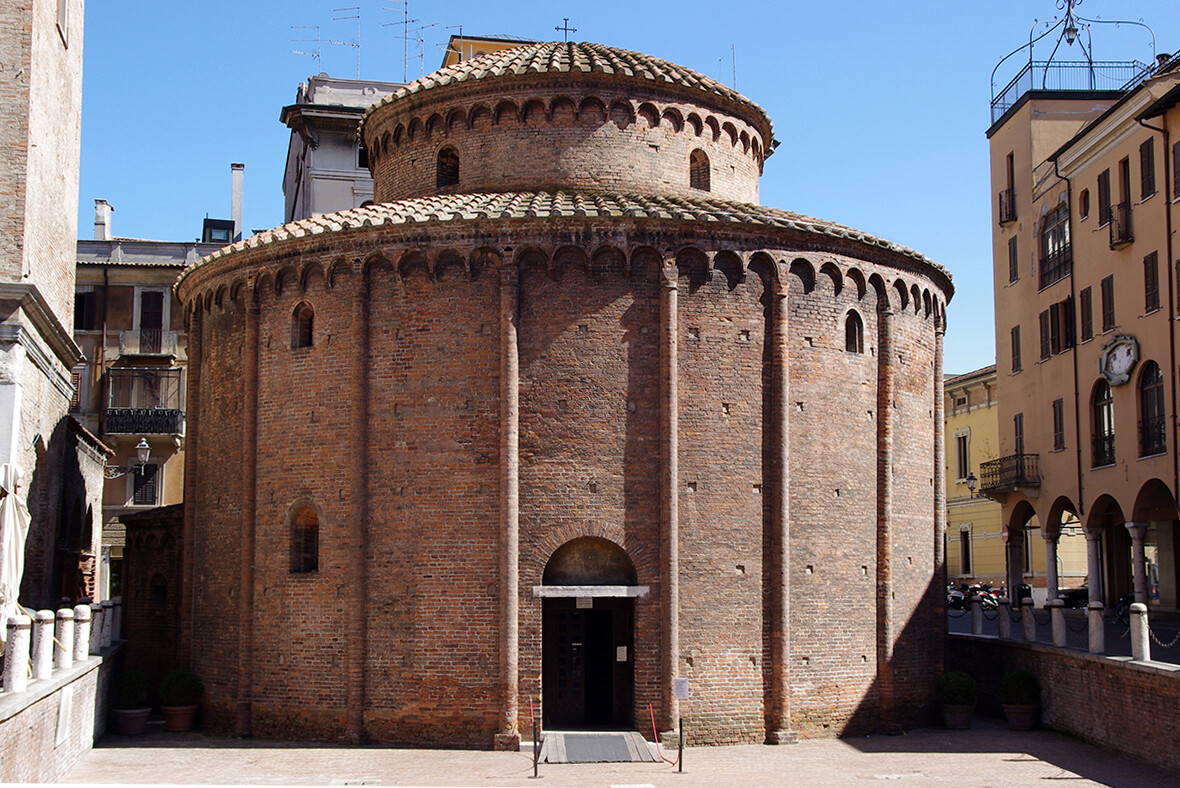
Merchant's House
The Merchant's House (or Boniforte da Concorezzo's House) is a historic building located in Piazza delle Erbe at the corner with Piazza Mantegna. The building was commissioned by a wealthy textile merchant of Brianza origins, Giovanni Boniforte da Concorezzo, who settled in the city in 1455, at the time when Mantua was ruled by the Marquis Ludovico III Gonzaga. The three-storey building has a brick facade with late Gothic and oriental motifs in Venetian style.
The ground floor is punctuated by a portico supported by columns in red Verona marble, on whose architraves the following inscriptions can be read: "HANBONIFORT DA CONCHOREZO AFAT FAR THIS OPERA DELANO 1455 - IOHANESBONIFORT DE CONCORESIO HOC OPUS FIERI FECIT SUB ANNO DOMINI 1455".
